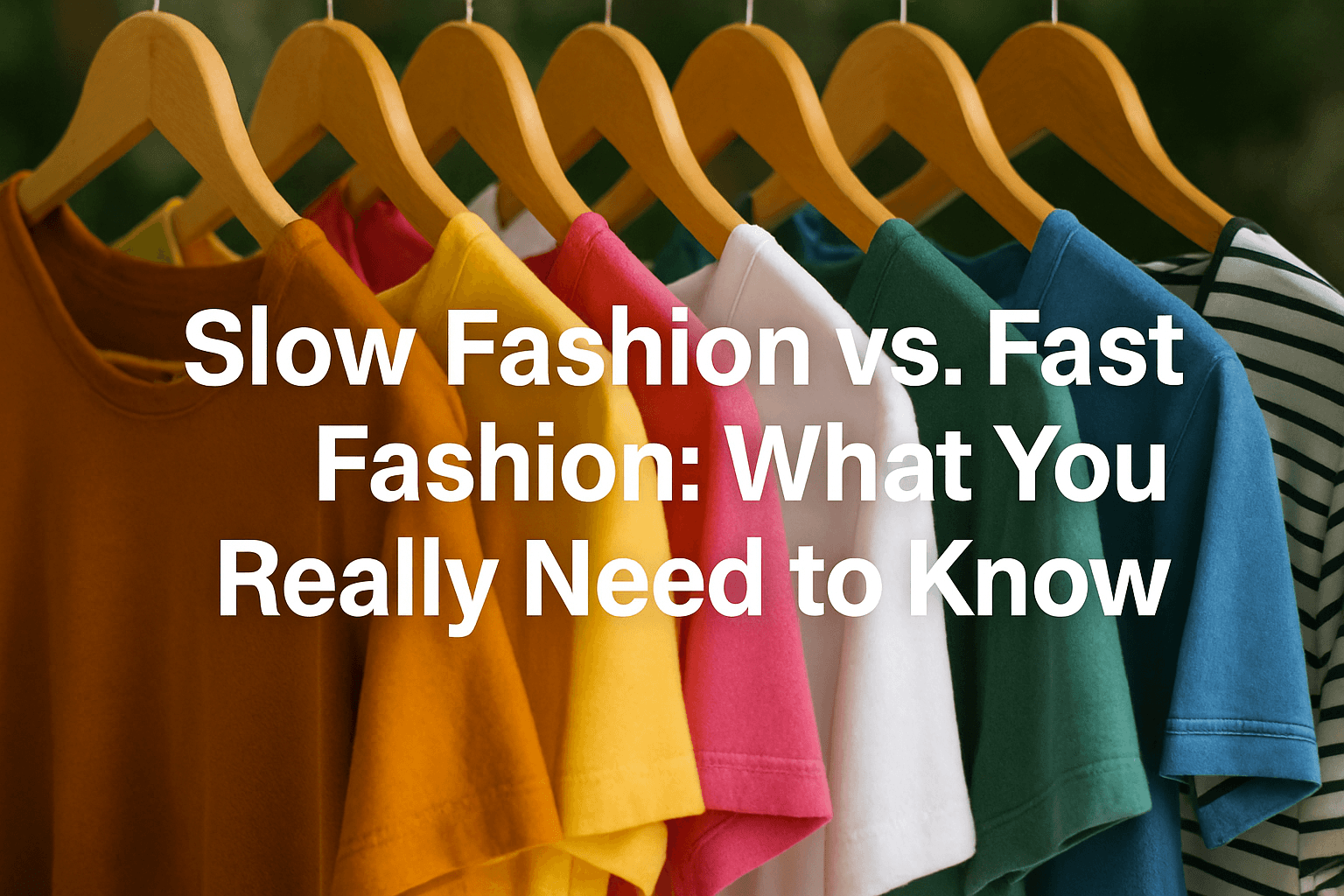Slow Fashion vs. Fast Fashion: What You Really Need to Know


Understanding the differences between slow and fast fashion is not just about style. It's about knowing how your clothes are made, who makes them, and what impact they leave behind. If you've ever wondered what sets these two apart, here’s a closer look.
What is Fast Fashion?
Fast fashion refers to the mass production of trendy clothing, quickly moved from design to store shelves. These pieces are often inspired by runway styles and celebrity looks and are made to be sold at low prices. The goal is speed and volume—get the trend out while it's hot, sell it fast, and move on to the next.Brands following this model release dozens of collections each year, sometimes updating their inventory weekly. It encourages consumers to buy more, wear less, and constantly refresh their wardrobes.
What is Slow Fashion?
Slow fashion is the opposite. It focuses on quality over quantity, encouraging mindful purchases that last longer and support ethical practices. This approach values sustainability, fair wages, natural materials, and craftsmanship. Brands that follow slow fashion principles often produce in smaller batches and design with timelessness in mind.Rather than chasing trends, slow fashion embraces personal style, durability, and responsible consumption.
The Core Differences
Let’s break it down further with the main points of difference:1. Speed and Production Cycles
Fast fashion churns out new collections at lightning speed—sometimes within days or weeks. Slow fashion works on longer timelines, often seasonal or even annual, allowing for more thoughtful design and manufacturing.2. Quality of Materials
Fast fashion typically uses cheaper synthetic fabrics to keep costs low. These fabrics may not last long, losing shape or color after a few washes. Slow fashion prioritizes natural or recycled materials like cotton, linen, or wool, which are often more breathable and durable.3. Pricing and Value
Fast fashion is usually very affordable up front. But low costs often reflect in lower quality and limited lifespan. Slow fashion may carry a higher price tag, but the value lies in longevity. One well-made garment can outlast several fast fashion items.4. Labor Practices
Fast fashion often outsources manufacturing to countries with lower labor costs, which can sometimes lead to poor working conditions. Slow fashion supports ethical labor, fair wages, and safe environments for workers.5. Environmental Impact
Fast fashion is one of the largest contributors to global textile waste and pollution. The constant cycle of production, consumption, and disposal puts a heavy strain on the planet. Slow fashion aims to minimize waste by producing less, using eco-friendly materials, and encouraging recycling or upcycling.
Why Fast Fashion Became So Popular
It’s easy to see why fast fashion took off. Affordable prices, frequent new arrivals, and easy availability make it appealing. For many shoppers, it’s a way to experiment with trends without spending a lot. In a world driven by social media, where styles change almost overnight, fast fashion offers a quick fix.The Case for Slow Fashion
While fast fashion offers short-term satisfaction, slow fashion builds a long-term relationship with clothing. It's about owning pieces that feel good, fit well, and mean something. It also reflects a growing shift toward responsible living—where people care about where their clothes come from and what happens after they're done wearing them.Slow fashion invites you to ask questions:
Who made this garment?What materials were used?
How long will it last?
It promotes thoughtfulness over impulse, and quality over quantity.
Can Both Coexist?
It’s not about choosing one and rejecting the other entirely. Realistically, many people mix elements of both. You might shop fast fashion for an emergency outfit or a budget-friendly seasonal trend, while choosing slow fashion for your essentials or investment pieces.What matters is awareness. Even small changes in buying habits—like shopping less frequently, supporting local brands, or choosing natural fabrics—can make a difference.
How to Embrace Slow Fashion
- Buy less, choose well. Instead of buying five items, consider one high-quality piece that you truly love.
- Do your research. Look into the brand’s ethics, materials, and production practices.
- Care for your clothes. Proper washing, storage, and repair can extend the life of any garment.
- Recycle or donate. Keep your clothes in circulation through donations, swaps, or resale platforms.
- Support local or handmade labels. Many small designers follow slow fashion values naturally.
Fashion is personal, but its impact is global. Fast fashion brought accessibility and choice, but slow fashion brings meaning and mindfulness. The future of clothing doesn’t have to be rushed. It can be thoughtful, sustainable, and stylish at the same time.
Next time you're about to hit “add to cart,” take a moment to reflect. The clothes we wear tell a story—not just about us, but about the world we want to live in.
Related Articles

Best Online Shopping Hacks for Fashion Lovers

Long Weekend Looks: Travel-Friendly Outfits That D...

